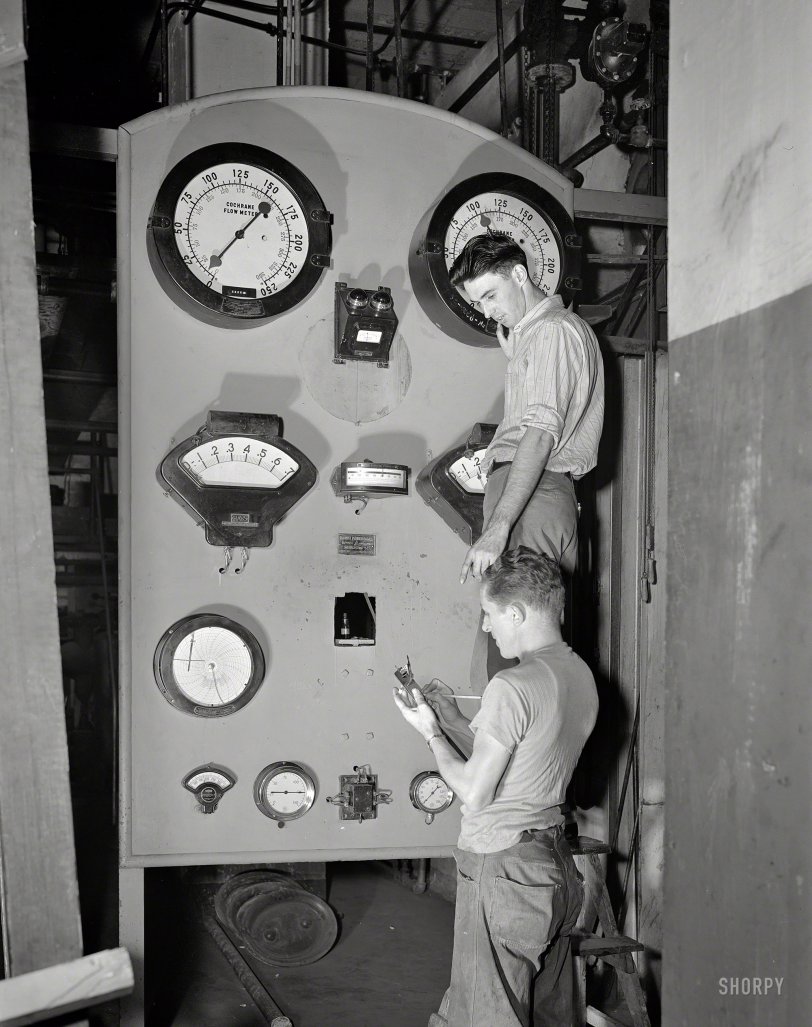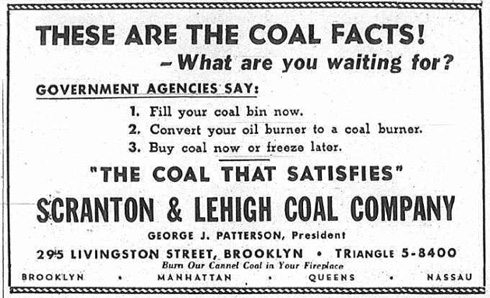


Framed or unframed, desk size to sofa size, printed by us in Arizona and Alabama since 2007. Explore now.
Shorpy is funded by you. Patreon contributors get an ad-free experience.
Learn more.

- Freeze Frame
- Texas Flyer wanted
- Just a Year Too Soon
- WWII -- Replacing men with women at the railroad crossing.
- Yes, Icing
- You kids drive me nuts!
- NOT An Easy Job
- I wonder
- Just add window boxes
- Icing Platform?
- Indiana Harbor Belt abides
- Freezing haze
- Corrections (for those who care)
- C&NW at Nelson
- Fallen Flags
- A dangerous job made worse
- Water Stop
- Passenger trains have right of way over freights?
- Coal
- Never ceases to amaze me.
- Still chuggin' (in model form)
- Great shot
- Westerly Breeze
- For the men, a trapeze
- Tickled
- Sense of loneliness ...
- 2 cents
- Charm City
- What an Outrage
- Brighton Park
Print Emporium
Engauged: 1942

September 1942. "Washington, D.C. Conversion of the Shoreham Hotel furnace from oil to coal burning system." Crank it, boys, and let's see what this thing'll do. Photo by Howard Liberman for the Office of War Information. View full size.
Gauges
Back then, gauges didn't need units on the faces! That was for sissies! Everybody just knew what they meant.
Cellar Cockpit
Add a turn and bank indicator and you have the instrument panel of the "Spirit of St. Louis."
Oil to coal furnace
From The Harvard Crimson October 29, 1942:
"In order to save the precious war fuel the University is undertaking a mass conversion from oil furnaces to coal consuming burners. Although the change is not yet complete practically all of the heating units will be made over by November 1.
When the change is made, Harvard will be saving oil at a rate of 87,000 barrels (3,654,000 gallons) a year for the war effort."
Also, this ad from the September 20, 1942 Brooklyn Eagle:

Wartime
Oil to coal would seem to be a step back in terms of efficiency. Was this a wartime requirement?
Nobody went back to coal from oil
My dad was thrilled to get an oil furnace. No more shovelling, or banking the fire for the night.
[They did during the war. - Dave]
I say Tomato ... what do you say?
Dave, quite apart from the picture itself, I was somewhat intrigued by your choice of title, "Engauged." On this side of the pond, a gauge is a gauge. In almost all U.S. usage,I have seen it spelled as "gage." Yet you used "gauge." When is a gauge a gage, (other than a greengage)?
[Standard spelling for the word in America is "gauge." The use of "gage" as a variant spelling (at least among people with college educations) is much less prevalent, probably about equal in popularity with the misspelled variant "guage." - Dave]
























On Shorpy:
Today’s Top 5